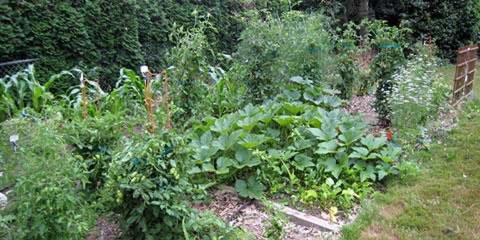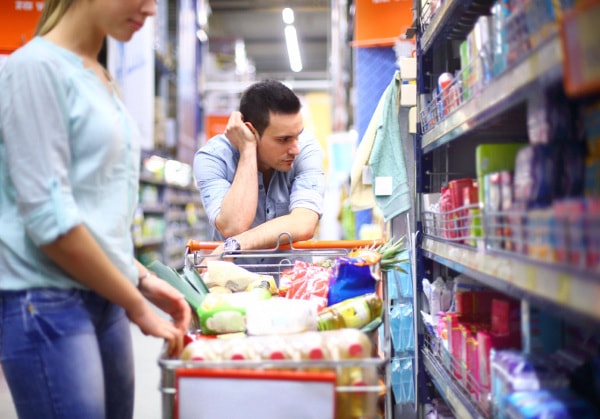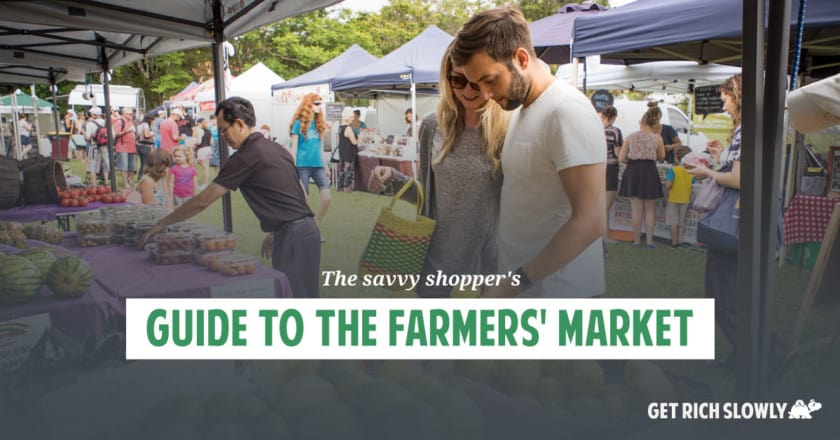The financial cost of obesity
Weight and finances have been discussed at length on personal finance blogs, but mostly the report [PDF] that put a figure to the staggering individual costs of being obese in America. Dr. Avi Dor, report author and professor and director of the health economics program at The George Washington University, and his colleagues quantified indirect costs, direct costs, and lost productivity to arrive at an estimated total cost of being an obese individual.
The High Price of a High BMI
After tabulating various costs associated with being overweight or obese, the researchers found that being an obese individual in the U.S. costs $4,879 for women and $2,646 for men each year. The overall annual costs of being overweight are $524 for women and $432 for men. The researchers defined "obesity" as a body mass index (BMI) higher than 30, and "overweight" as a BMI between 25—29.
Adding the value of lost life to these yearly costs makes the price tag even higher: $8,365 and $6,518 for women and men, respectively. Continue reading...
What to Do with Fresh Produce
During the summer, there's an abundance of high-quality fruits and vegetables. You get better quality for lower prices than you do buying off-season produce during the cold winter months. I always want to freeze this moment so I can enjoy the fruits of the season all year long. So I do.
Every year, I freeze some produce, and I can some, and I use a variety of methods to make the bounty last. Last week, I wrote about smart ways to acquire your seasonal produce. Today, I'm going to talk about how to use it to get the best value for your food dollar.
Eat well
First (and this is obvious): Eat a lot. When fresh vegetables are in season, I try to shift my diet towards dishes that focus on the food being grown in my own backyard and on local farms. That's more challenging than it sounds. There might be nothing better than a fresh garden tomato. But twenty pounds of fresh tomatoes can become overwhelming even for the most avid fan.
Best Sources for Summer Produce
The summer harvest season has finally begun here in Boston. Near my house, Farmers' markets are popping up, brimming with fresh greens, ripe strawberries, and luscious radishes. Our first CSA share delivery of the season arrived last week. And my garden has started to cough up a few plump berries and herbs.
Make friends with the farmers
My family loves vegetables. The kids love kale chips and fresh strawberries. We all eat sugar snap peas by the fistful. Later in the summer, my husband and I will haul in the tomatoes that are just starting to grow in our yard and make as much salsa as we can.
Since we love vegetables so much, every summer I look for ways to economize on our fresh vegetables. There are two main aspects to this project: getting a good deal on the veggies, and making good use of them.
How to Grow Your First Garden
Starting a vegetable garden can be one of the most rewarding hobbies you ever pursue. Gardening is a source of relaxation and exercise, while yielding hundreds of dollars worth of fresh and delicious produce. It's also extremely rewarding to watch the seeds you plant and care for grow into mature plants.
If you're ready to take the plunge and start your first vegetable garden, this article will help you understand what you're getting into and the steps you'll need to take to make it to that first harvest.

The garden in summer
Things to Consider Before You Start
Gardening, especially for those without experience, goes a lot better if planned properly beforehand. So before you take a shovel to your front yard, here are some important questions to consider:
Fight rising prices by building your own food bank pantry
According to the U.S. Department of Agriculture, food prices are expected to rise as much as 5.5% in 2011. Those prices aren't likely to go back down. So why not invest in food futures, i.e., your own pantry? Put it this way: If you have an emergency fund in the bank, why not have food in the bank?
Liz Pulliam Weston calls a full cupboard “the emergency fund you can eat.” Having plenty of staples on hand makes sense for several reasons:
- You're locked in at the price you paid, which ideally will be the sale price (more on that later).
- There's always something to fix for supper, which can mean less temptation to order in. You can also pack your own lunch.
- If you get furloughed or laid off, you can eat from your cupboards.
- Getting the best deals means your food dollars go further.
- Having the ingredients to throw together a quick meal means less temptation to order in.
- A deep pantry means less need to run to the store to get just one or two items. (Can you really get out of the store with just a six-ounce can of tomato paste?) This in turn means less wear and tear on the car and less gas used.
- If times get tight, you can eat from your cupboard.

Cheap Tupperware alternatives: Frugal food storage containers
To hear the storage industry tell it, every kitchen needs plastic containers in a dozen sizes. You need specialized storage, too: triangles for wedges of pie, say, or deviled-egg sarcophagi with little divots to cradle each demi-oeuf. Oh, and lots of foil, waxed paper, and plastic wrap and bags to hold sandwiches and snacks or cover bowls of leftovers.
My boxes of foil and plastic wrap last me up to a couple of years each. And while I'll cop to owning a few Tupperware and Rubbermaid pieces, it's all hand-me-down stuff — and note that I said a few. I don't need much, and I don't use much commercial wrapping, because there are plenty of other ways to store food.
Use What You've Got
Don't automatically assume you need special food-storage containers. Why not just put leftovers in a bowl with a saucer or bread-and-butter plate on top? If it fits snugly, it's no different than aluminum foil or a plastic lid. (What? You thought that “burping” a Tupperware container got all the air out?)
<Wine on a budget: How to get good deals on wine

The holiday season is upon us, the time of year for family, friends, food — and wine. Yes, it's true, I associate the holidays with alcohol. It never used to be this way (probably because I didn't drink), but for the past five years, I've spent late November stocking our wine rack.
There are several reasons for this:
- From mid-November to mid-January, the local supermarkets have huge wine sales.
- Every winter, Consumer Reports lists holiday wine bargains. In the December 2010 issue, for example, they suggest 22 "best buys" between $4 and $15 per bottle. (Most are in the $7 to $10 range.)
- Our circle of friends seems to have more dinner parties during the winter than at other times of the year. When we gather, we drink wine.
For a long time, I used the shotgun method of buying wine. I went to the store and bought bottles at random, usually based on whether I liked the label. (No joke!) Nowadays, however, I'm more methodical. I'm reluctant to buy a wine I haven't tried before; I mostly buy wines I know I like. And I try to get them for as little as possible. Continue reading...
Extreme personal finance: Eating well on one dollar a day
Last Thursday, Ron Lieber (who writes the "Your Money" column for The New York Times) posted an innocuous little tweet:
This person will have book deal & Today show slot in 5 minutes. RT @marypilon Personal finance blogger eats on $1/day. http://www.grocerycouponguide.com/articles/eating-well-on-1-a-day/
To translate into plain English, Jeffrey from the Grocery Coupon Guide blog undertook a little experiment last month. In response to a challenge from his sister he "ate well" on just a buck a day, thanks largely to his awesome shopping skills and couponing prowess.
Get kitchen gadgets for less at the local restaurant supply store
My pal Chris Guillebeau is out of town on another one of his around-the-world jaunts. While he's living the high life in Equatorial Guinea, his wife Jolie (the artist behind my Kermit painting) is left to entertain herself here in Portland. What does she choose to do? While away her hours with me and Kris.
On a whim, yesterday the three of us made a trip to the local restaurant supply store. This wasn't my idea. Kris and Jolie decided it'd be a fun way to spend part of an afternoon; I tagged along for the husband points. Turns out, however, that the restaurant supply store is a great place to save money.
I'm not sure how Kris heard about the place, but Rose's Equipment and Supply is located in Portland's central-Eastside industrial district (not far from OMSI). It really is an equipment supplier — they don't carry foodstuff — for local restaurants, but their warehouse is open to the public. Basically, it's like a Costco for kitchen gadgets.
The savvy shopper’s guide to the farmers’ market

Shopping at a farmers' market is a great way to eat healthier and support local agriculture, but if you've ever been to one, you know that the food isn't cheap.
When you're used to fairly inexpensive tomatoes from the supermarket, the price of locally-grown, heirloom tomatoes can be a bit of a shock, leading some consumers to wonder what makes the market tomatoes so much pricier.
The thing is, the farmers' market prices are the true cost of food. In Getting Real About the High Price of Cheap Food, author Bryan Walsh writes: